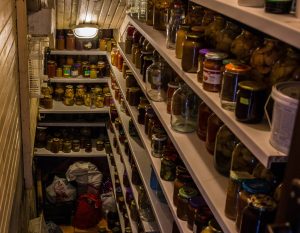How to Vent a Cold Storage Room: Ensuring Efficient Temperature Control
When it comes to maintaining a cold storage room, proper ventilation is crucial for ensuring the preservation of perishable goods and maintaining an optimal temperature. Whether you’re operating a commercial cold storage facility or have a residential walk-in cooler, understanding how to vent it effectively is essential. In this comprehensive guide, we’ll delve into the importance of ventilation in cold storage rooms and provide you with practical tips to ensure efficient temperature control.
The Importance of Proper Ventilation in Cold Storage Rooms
Preserving Perishable Goods
One of the primary reasons for venting a cold storage room is to preserve perishable goods. Whether you’re storing fruits, vegetables, dairy products, or meat, maintaining the right temperature and humidity levels is crucial to prevent spoilage and extend the shelf life of these items. Proper ventilation helps in distributing cool air evenly, preventing hotspots, and ensuring that all items inside the storage room are adequately cooled.

Preventing Moisture Buildup
Moisture can be a significant issue in cold storage rooms, as it can lead to mold growth and degradation of the stored products. Ventilation plays a vital role in reducing moisture buildup by allowing excess humidity to escape. This is particularly important in commercial cold storage facilities where large quantities of products are stored for extended periods.
Energy Efficiency
Efficient ventilation can also contribute to energy savings in cold storage facilities. By ensuring that cool air circulates properly, you can reduce the workload on your cooling systems, leading to lower energy consumption and operational costs.
Ventilation Methods for Cold Storage Rooms
Now that we understand why ventilation is essential in cold storage rooms, let’s explore some effective ventilation methods to ensure optimal temperature control.
Mechanical Ventilation
Mechanical ventilation involves the use of fans or exhaust systems to circulate air within the cold storage room. This method is highly effective in preventing temperature stratification and maintaining consistent temperatures throughout the storage space. Here are some tips for implementing mechanical ventilation:
1. Fan Placement: Install fans strategically to ensure even air distribution. Fans should be positioned near the ceiling to help circulate the rising warm air downward.
2. Size Matters: Choose fans that are appropriately sized for your cold storage room. Oversized fans can create excessive airflow, while undersized fans may not provide adequate circulation.
3. Timer Controls: Consider using timer controls to activate fans during peak cooling demand times, ensuring energy efficiency.
Natural Ventilation
Natural ventilation relies on the principles of convection to allow hot air to rise and exit the cold storage room while drawing in cooler air from outside. Here’s how you can utilize natural ventilation effectively:
1. Vent Openings: Install vent openings at strategic locations in your cold storage room. These openings should be positioned to facilitate a natural airflow path.
2. Roof Vents: Roof vents can be particularly effective in allowing warm air to escape. Ensure that they are properly insulated and equipped with screens to prevent pests from entering.
3. Temperature Monitoring: Use temperature sensors to monitor the conditions inside your cold storage room. When the temperature rises above the desired range, you can open vents manually or automatically to facilitate natural ventilation.
Combination of Mechanical and Natural Ventilation
In many cases, a combination of mechanical and natural ventilation methods can provide the best results. This approach allows you to take advantage of the strengths of both methods while mitigating their weaknesses.
Maintenance and Best Practices

Proper maintenance is essential to ensure that your chosen ventilation system functions optimally. Here are some maintenance tips and best practices to consider:
Regular Inspection
Perform routine inspections of your ventilation system to check for any obstructions, damage, or signs of wear and tear. Address any issues promptly to prevent disruptions in airflow. Read our article here.
Cleaning
Dust and debris can accumulate on fan blades or vent openings, reducing the effectiveness of your ventilation system. Regularly clean and remove any obstructions to maintain efficient airflow.
Temperature Monitoring
Use temperature monitoring systems to keep track of the temperature and humidity levels in your cold storage room. This will help you identify and address any issues before they can cause significant damage to your stored goods.
Sealing Gaps and Leaks
Ensure that your cold storage room is properly sealed to prevent warm air from infiltrating and cool air from escaping. Inspect doors, windows, and any potential gaps for leaks and seal them as needed.
Conclusion
Proper ventilation is a fundamental aspect of maintaining a cold storage room’s efficiency and preserving the quality of stored products. By understanding the importance of ventilation, implementing suitable methods, and following maintenance best practices, you can ensure that your cold storage room operates at its best, saving energy, reducing waste, and prolonging the shelf life of your goods. Whether you’re managing a commercial cold storage facility or a residential cooler, these guidelines will help you achieve optimal temperature control and storage conditions.

Recent Comments